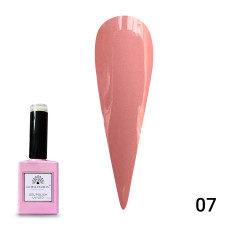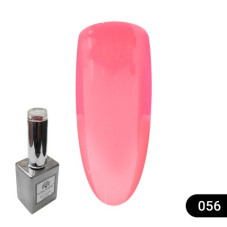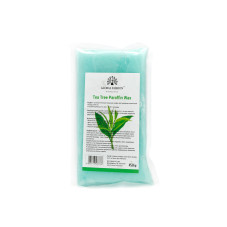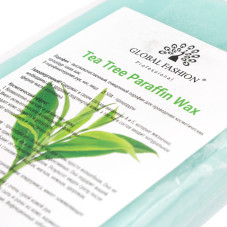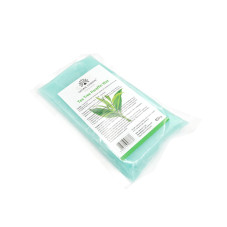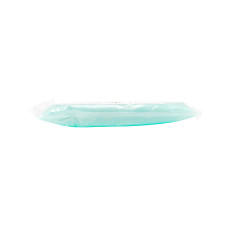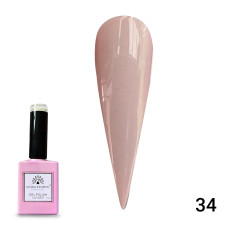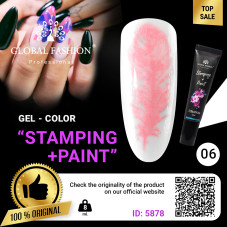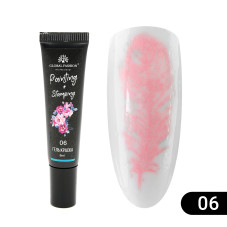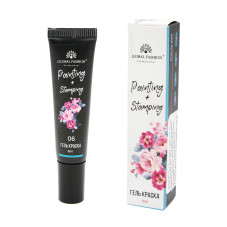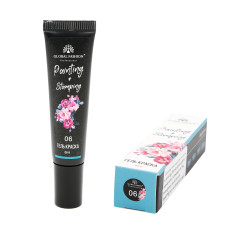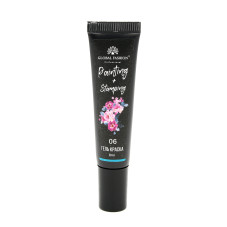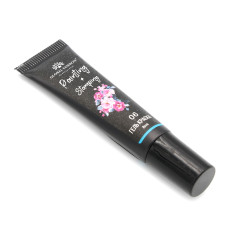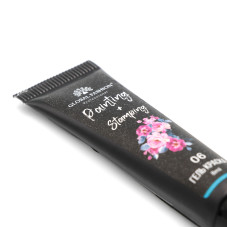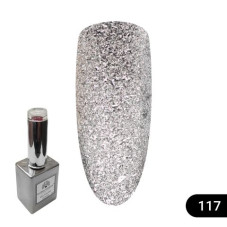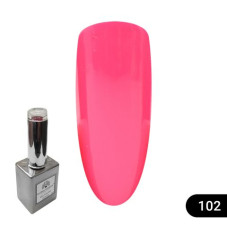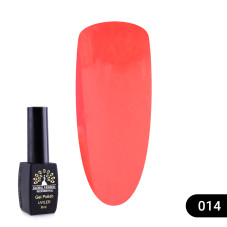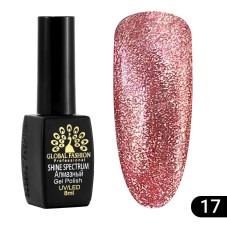How to Brighten Discolored Nails (and Find Out What's Causing Them)

Whether you consistently opt for a perfectly-polished pedicure or you prefer a more au naturale look, one thing’s for sure: nobody wants discolored nails. Yet white stripes, a yellow tint, green, blue—and yes, even black—are all some not-so-fun results of nail discoloration on your fingers and toes.
And just as the colors differ, the reasons behind them do, too. We tapped a podiatrist for the causes behind nail discoloration and how to treat it.
MEET THE EXPERT
Miguel Cunha, DPM, is a Manhattan-based podiatrist and the founder of Gothman Footcare. He specializes in foot and ankle surgery with experience treating a wide array of conditions.
CAUSES OF NAIL DISCOLORATION
- Fungus: According to Cunha, while several things can negatively impact the color and texture of nails, fungus is usually the leading culprit. «Yellow or brown and thickened nails are signs of fungal nails,» he says, which are caused when a microscopic fungus infects one or more nails. «These microscopic organisms typically thrive in dark, warm, and moist environments, which makes a prime place for fungal growth the inside of your shoes.» Fungal nails often begin as Athlete’s Foot, when the skin becomes infected first, and then will grow deeper into the nail where it can cause the nail to, as Cunha describes, «discolor, thicken, and develop crumbling edges—an unsightly and potentially painful problem.»
- Bruising: Black or purple nails, on the other hand, are usually signs of what’s called a subungual hematoma, or, «a bruise of the nail bed that occurs when the nail is injured and small blood vessels bleed underneath the nail staining it darker,» Cunha describes. This is usually caused by trauma to the area, the result of something like stubbing or dropping something on your toes. One option for dealing with a subungual hematoma is to simply wait it out. Eventually, a healthy nail will gradually replace the damaged one. The problem is that our toenails aren’t the quickest growers—they grow at a rate of a few millimeters per month. It can take several months for a new, healthy nail to grow and fully replace the problem. But sometimes, the pain can be too much, and the thought of waiting for a few months doesn’t seem realistic. Consequently, another option is to have the nail removed by a professional.
- Trauma: White spots or grooved lines can also be triggered by trauma from something such as wearing a sneaker that is too small while running.
- Possible cancerous cells: Perhaps the most alarming visual sign of nail discoloration is black stripes. These can either be of no concern or of serious concern and should almost always be evaluated by a medical professional. As Cunha states, this could be linear melanonychia, which affects the majority of African Americans. Cunha explains, «This condition occurs when pigments in the nail, known as melanocytes, make excess pigment causing the nail beds to darken.» Less common but more serious explanations include taking certain medications such as chemotherapy drugs or skin cancer and immunodeficiency diseases such as lupus, scleroderma, and HIV. Cunha adds that a splinter hemorrhage, which occurs when blood vessels under the fingernail are damaged resulting from impact and injuries, is also a possible explanation for a black stripe on the toenail.
- Genetics: Inherited conditions may also play a part in some nail discoloration, such as psoriasis, which can lead to the development of psoriatic nails. «These nails can become thickened, brittle, discolored, and look as if they are infected with fungus,» Cunha explains. Nail fungus can also run in families due to an inherited sensitivity.
- Leukonychia: You know those white spots on your nails that everyone seems to have at some point in their life? It's called leukonychia and it's actually quite common and also completely harmless. It can be caused by nail injury, fungal infections, or a mineral deficiency.
Instead of simply accepting your nail discoloration, it’s important to see a podiatrist for some answers before tackling the issue on your own. An examination and nail biopsy will likely take place to find a reason for the discoloration if any. After speaking with your doctor, here are some things you might try to whiten your nails and restore their health.
1. WEAR THE CORRECT FOOTWEAR
MEET THE EXPERT
Miguel Cunha, DPM, is a Manhattan-based podiatrist and the founder of Gothman Footcare. He specializes in foot and ankle surgery with experience treating a wide array of conditions.
CAUSES OF NAIL DISCOLORATION
- Fungus: According to Cunha, while several things can negatively impact the color and texture of nails, fungus is usually the leading culprit. «Yellow or brown and thickened nails are signs of fungal nails,» he says, which are caused when a microscopic fungus infects one or more nails. «These microscopic organisms typically thrive in dark, warm, and moist environments, which makes a prime place for fungal growth the inside of your shoes.» Fungal nails often begin as Athlete’s Foot, when the skin becomes infected first, and then will grow deeper into the nail where it can cause the nail to, as Cunha describes, «discolor, thicken, and develop crumbling edges—an unsightly and potentially painful problem.»
- Bruising: Black or purple nails, on the other hand, are usually signs of what’s called a subungual hematoma, or, «a bruise of the nail bed that occurs when the nail is injured and small blood vessels bleed underneath the nail staining it darker,» Cunha describes. This is usually caused by trauma to the area, the result of something like stubbing or dropping something on your toes. One option for dealing with a subungual hematoma is to simply wait it out. Eventually, a healthy nail will gradually replace the damaged one. The problem is that our toenails aren’t the quickest growers—they grow at a rate of a few millimeters per month. It can take several months for a new, healthy nail to grow and fully replace the problem. But sometimes, the pain can be too much, and the thought of waiting for a few months doesn’t seem realistic. Consequently, another option is to have the nail removed by a professional.
- Trauma: White spots or grooved lines can also be triggered by trauma from something such as wearing a sneaker that is too small while running.
- Possible cancerous cells: Perhaps the most alarming visual sign of nail discoloration is black stripes. These can either be of no concern or of serious concern and should almost always be evaluated by a medical professional. As Cunha states, this could be linear melanonychia, which affects the majority of African Americans. Cunha explains, «This condition occurs when pigments in the nail, known as melanocytes, make excess pigment causing the nail beds to darken.» Less common but more serious explanations include taking certain medications such as chemotherapy drugs or skin cancer and immunodeficiency diseases such as lupus, scleroderma, and HIV. Cunha adds that a splinter hemorrhage, which occurs when blood vessels under the fingernail are damaged resulting from impact and injuries, is also a possible explanation for a black stripe on the toenail.
- Genetics: Inherited conditions may also play a part in some nail discoloration, such as psoriasis, which can lead to the development of psoriatic nails. «These nails can become thickened, brittle, discolored, and look as if they are infected with fungus,» Cunha explains. Nail fungus can also run in families due to an inherited sensitivity.
- Leukonychia: You know those white spots on your nails that everyone seems to have at some point in their life? It's called leukonychia and it's actually quite common and also completely harmless. It can be caused by nail injury, fungal infections, or a mineral deficiency.
Instead of simply accepting your nail discoloration, it’s important to see a podiatrist for some answers before tackling the issue on your own. An examination and nail biopsy will likely take place to find a reason for the discoloration if any. After speaking with your doctor, here are some things you might try to whiten your nails and restore their health.
1. WEAR THE CORRECT FOOTWEAR
Properly caring for your feet may help prevent both disease and discoloration in myriad ways. Cunha's best advice includes avoiding walking barefoot in any public places and wearing only clean socks. Avoid rewearing and changing socks frequently if you are active. Dark, moist places are where bacteria thrive, and you’ll want to avoid giving them an easy place to grow.
BYRDIE TIP: Consider wearing moisture-wicking socks and avoid fabrics that trap in water like wool and polyester.
Properly fitting shoes are also a must to avoid repetitive micro-trauma. Consistent trimming, cleansing, and filing of the nails are important as well to try to avoid discoloration-causing trauma and infection.
2. GET A LASER TREATAMENT
Not just for hair removal and anti-aging, laser treatment for nails is a pain-free way to deal with certain discolorations. Laser treatment «creates micro-pores on the nail bed allowing the anti-fungal topical to penetrate the nail plate more efficiently and effectively, attacking the source of the nail plate more directly,» says Cunha.
3. RESEARCH YOUR NAIL SALON
If you opt for professional pedicures, ensure you only select places that properly sanitize tools, tubs, and products in-between every customer. Otherwise, you risk contracting a fungus or bacterial infection—a large price to pay for what was meant to be a little R&R. Think about bringing your own pedicure kit if you're concerned about the tools.
4. USE COMMON KITCHEN ITEMS
The answer to whiter nails just might be in your kitchen cabinet. Cunha says, «Apple cider vinegar contains both acetic acid and alpha hydroxy acid, which have anti-fungal, antiseptic, and antimicrobial properties to help fight fungal nails, which in turn are more likely improve the white appearance of the nail.» Create a foot soak of one part ACV and two parts warm water to help treat the infected areas.
Other products applied topically, such as baking soda and toothpaste, may help cosmetically improve the whiteness of the nails, so long as the nails are not discolored permanently from trauma or underlying pathological conditions. Ultimately, «the quality of your nails really goes down to how well you treat your feet,» he explains.
5. CONSIDER SUPPLEMENTS
Sometimes, yellowing nails can be a sign of a vitamin deficiency. Vitamins and supplements, like collagen can have a positive effect on nail health and color. Consult your physician before starting any supplement or vitamin regimen.
FAQ
5. CONSIDER SUPPLEMENTS
Sometimes, yellowing nails can be a sign of a vitamin deficiency. Vitamins and supplements, like collagen can have a positive effect on nail health and color. Consult your physician before starting any supplement or vitamin regimen.
FAQ
Can you treat nail discoloration at home?
If your nail discoloration is caused by fungus, some home treatments might help. Ingredients like apple cider vinegar, vinegar, tea tree oil, and hydrogen peroxide are all anti-fungal and antibacterial ingredients that have been claimed to be an effective foot soak to treat discolored toenails.
What are signs that your nails are unhealthy?
Besides nail discoloration, other signs your nails might be unhealthy include brittle nails, curling, splitting, nails that either become too thick or too thin and swelling and/or bleeding around your nails and nail bed.
What does it mean when you have yellow nails?
If your nails are yellow, it could be a possible sign of a fungal infection, using certain types of dye, vitamin deficiencies, and, in some cases, diabetes or thyroid conditions.
Source : www.byrdie.com
Author: Erin Selletti
Global Fashion Shop provides you with professional nail care and modeling products.
Other articles:
- 5 - destructive habits that make nails worse. How can you beat them?
- Burrs are a hand and nail problem. How to get rid of them?
- How to fix cracked cuticles
- How to i treat my peeling nails?
Published: 15.04.2022 14:44
Times Read: 4415
